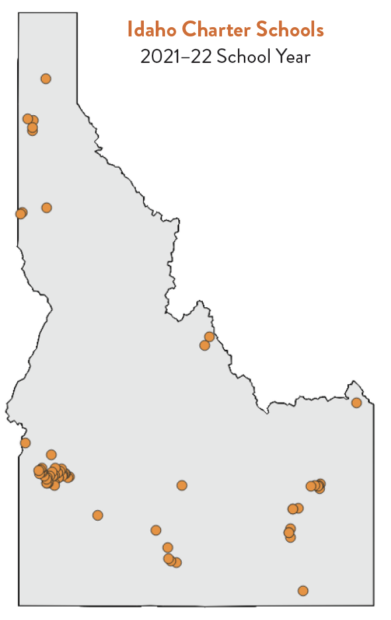Idaho’s school choice menu can be like Burger King for some families.
Have it your way.
Or it can be more like home cooking or that classic diner down the road.
What I mean is many families have a range of options when it comes to choosing a school.
But others still don’t. Several factors can impact where parents are able to send their kids.
Homeschooling has always been an option. But it doesn’t work for everyone. My wife and I took a swing and a miss at it during a short-lived COVID closure in 2020. It felt like amateur hour, so we put the kids on the next bus back to their neighborhood school.
The state doesn’t keep track of how many students are homeschooled, but it’s a small percentage of Idaho’s 312,000 students in the public school system.
Idaho also has private schools for those who can afford it and 24 magnet schools — free, district-run options that target areas like science or technology. These options exist to varying degrees across the state.
But a Whopper of an option has become Idaho’s public charter schools, which, like their traditional counterparts, are free for students who can get in.
Get in? We’ll get to that.
Over the past 21 years, charters have grown to 75 schools with in-person and virtual options and a range of teaching approaches. They’ve expanded to nearly every city and to some of Idaho’s most remote places. Today, they enroll around 30,000 kids, not quite 10% of statewide enrollment.

Charter support group Bluum has supercharged the movement through oversight of millions in grants from the J.A. and Kathryn Albertson Family Foundation and Uncle Sam.
Yet demand lingers in our rapidly growing state.
Thousands of students were on charter waitlists in 2018. Demand varies locally, but charters in high-demand areas use lotteries to help ensure students are picked randomly.
No golden ticket? Then no seat, at least until another one opens up.
Overall, charters also have a track record of underserving minority and poor students. And a handful still lack free busing, something EdNews will have more on this week. Families hoping to attend these schools have to make their own arrangements.
Improving accessibility has been a focal point for Bluum and some school leaders over the years. Some charters now target at-risk students, and at least two are reshaping their enrollments through weighted lotteries aimed at infusing more diversity into their classrooms.
But keeping up with demand is a heavy haul in the nation’s fastest growing state. A recent market analysis facilitated by Bluum says Idaho will need about 98 schools’ worth of new seats by 2030 to absorb what feels like an infinite influx of people. We’ll have more on the analysis this week.
In short, there’s still plenty of room for charters to grow. They’re here to stay, and so is the push to bring one closer to your home.
What drives the demand?
Part of it is public perception. Charters have received glowing reviews from Idahoans year after year, according to opinion polls facilitated by EdNews.
The idea that they’re a better alternative is true — in some cases.
On average, charter students outperform their traditional peers academically. But averages are averages. Charters also constitute some of the highest and lowest performing schools in the state. Virtual charters have especially struggled over the years.
Then you have family dynamics. A school’s reputation for pushing kids academically might attract one family. A charter’s emphasis on helping kids prepare for life, its commitment to smaller classes or simply its atmosphere may attract other families. EdNews spoke with several parents last year who pointed to each of these things.
Our daughters attend our neighborhood district school, for several reasons. And at least one of them has nothing to do with their education. We keep landing in neighborhoods a stone’s throw from traditional schools. We like the proximity. Plus, athletics are a family tradition, and our daughters are looking forward to competing in school sports.
Academics haven’t been an issue for us, yet. Our daughters have adored their teachers, and we’ve been pleased with their progress so far.
But we haven’t completely ruled out other menu options.
Disclosure: Idaho Education News and Bluum are both funded by grants from the J.A. and Kathryn Albertson Family Foundation.
Further reading: Check out our in-depth series on Idaho charter schools from last summer: More choices, more challenges.
Compare schools: EdNews’ Idaho EdTrends lets you compare outcomes and information on any public school in Idaho, including charter schools.
